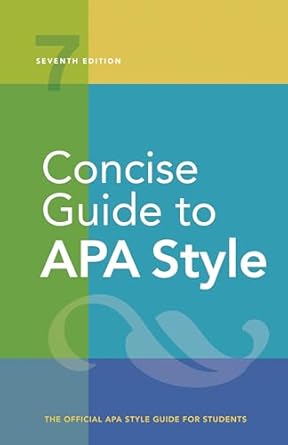[toc]
paper formatting guide spacing margins alignment
Concise Guide to APA Style: 7th Edition (OFFICIAL)
Page 44 Review
Mastering Academic Writing: A Deep Dive into Student Paper Formatting
This ebook excerpt delves into the nitty-gritty details of formatting student papers, offering invaluable guidance on spacing, margins, alignment, and indentation.
Let’s dissect this section to understand its key takeaways and implications for academic writing.
Spacing: Navigating the Nuances
The excerpt emphasizes the importance of adhering to specific spacing guidelines, with double-spacing being the standard for most of the text.
However, it also acknowledges exceptions for specific elements:
- Tables and Figures: “The table body (cells) and words within the image part of a figure may be single-spaced, one-and-a-half-spaced, or double-spaced, depending on what format creates the most effective presentation of the data.” This highlights the flexibility allowed in presenting data visually, prioritizing clarity and readability.
- Footnotes: “Footnotes that appear at the bottom of the page on which they are called out should be single-spaced and formatted with the default settings of your word-processing program.
Footnotes that appear on their own page after the references should be formatted like regular paragraphs of text—that is, indented and double-spaced.” This distinction ensures consistency and readability based on the location of the footnotes.
- Displayed Equations: “It is permissible to use triple- or quadruple-spacing in special circumstances, such as before and after a displayed equation.” This acknowledges the need for visual separation to enhance comprehension of complex mathematical expressions.
Furthermore, the excerpt explicitly states, “It is not necessary to add blank lines before or after headings, even if a heading falls at the end of a page.
Do not add extra spacing between paragraphs.” This reinforces the importance of adhering to prescribed spacing rules and avoiding unnecessary additions.
Margins: Defining the Boundaries
The text is clear: “Use 1-in. (2.54-cm) margins on all sides (top, bottom, left, and right) of the page.
This is the default page margin in most word-processing programs.” Standard margins ensure a consistent and professional appearance.
The excerpt also acknowledges that “Dissertations and theses may have different requirements if they are to be bound (e.g., 1.5-in. left margins).” This highlights the importance of checking specific guidelines for these types of documents.
Paragraph Alignment: Embracing the Ragged Right
The excerpt strongly advises against full justification: “Align the text to the left and leave the right margin uneven (“ragged”).
Do not use full justification, which adjusts the spacing between words to make all lines the same length (flush with the margins).” The reason for this preference likely lies in the avoidance of inconsistent word spacing that can occur with full justification, potentially hindering readability.
It also cautions: “Do not manually divide words at the end of a line, and do not use the hyphenation function to break words at the ends of lines.
Do not manually insert line breaks into long DOIs or URLs; however, breaks in DOIs or URLs applied automatically by a word-processing program are permissible.”
Paragraph Indentation: Signaling New Beginnings
Consistent paragraph indentation is crucial: “Indent the first line of every paragraph 0.5 in.
For consistency, use the tab key or the automatic paragraph-formatting function of your word-processing program.” This provides a clear visual cue for paragraph breaks and enhances readability.
Key Takeaways and Implications
This excerpt underscores the significance of meticulous formatting in academic writing.
Adherence to these guidelines demonstrates attention to detail and professionalism.
While seemingly minor, these elements contribute significantly to the overall clarity and readability of the paper.
By following these rules, students can ensure their work is presented in a clear, consistent, and professional manner.
It emphasizes clarity, consistency, and the avoidance of unnecessary or manually implemented formatting adjustments.
In conclusion, understanding and applying these formatting guidelines is essential for producing polished and professional academic papers.
Attention to detail in spacing, margins, alignment, and indentation can significantly enhance the readability and impact of your work.
Buy full ebook for only $18: https://www.lulu.com/shop/american-psychological-association/concise-guide-to-apa-style-7th-edition-official/ebook/product-rmzpq54.html?page=1&pageSize=4

